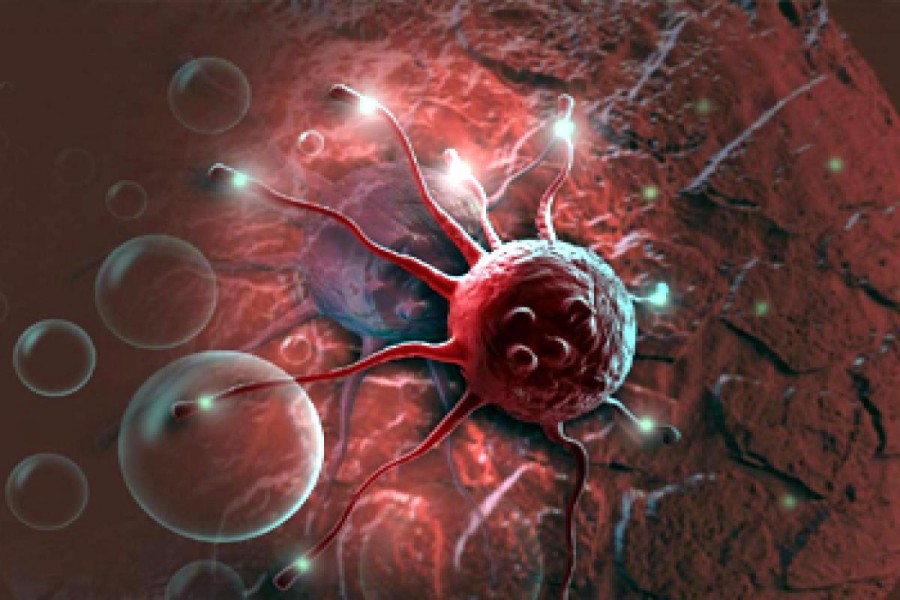Cancer-Killing Nanoparticles: An Innovative Method to Identify and Eliminate Cancer Cells
First of all, Cancer is a powerful foe in the field of human health that poses ongoing challenges to the medical community due to its complexity and diversity. An innovative line of inquiry has surfaced in recent years, demonstrating the potential of nanoparticles as a fresh and focused cancer-fighting strategy. The intriguing world of cancer-killing nanoparticles, their modes of action, and the bright potential they promise for transforming cancer treatment are all explored in this article.
Nanoparticles are minuscule particles ranging in size from 1 to 100 nanometers, and their unique properties make them ideal candidates for medical applications. Scientists have harnessed the power of nanoparticles to design delivery systems that can transport therapeutic agents specifically to cancer cells while sparing healthy tissues. These nanoparticles can be engineered from various materials such as lipids, polymers, metals, or ceramics, each offering distinct advantages in terms of biocompatibility, stability, and drug-loading capacity.
Understanding Nanoparticles: Due to their special qualities, nanoparticles, which are microscopic particles with sizes ranging from 1 to 100 nanometers, are excellent candidates for use in medicine. By using nanoparticles’ unique properties, scientists have created delivery systems that deliver therapeutic drugs only to cancer cells and spare healthy organs. Different materials, including lipids, polymers, metals, and ceramics, can be used to create these nanoparticles, and each has unique benefits in terms of stability, biocompatibility, and drug-loading capabilities.
As a result, there is less chance of unintentional harm to healthy cells and a greater concentration of the therapeutic payload reaching the malignant tissue, increasing the treatment’s effectiveness.
The enhanced permeability and retention (EPR) effect, in which nanoparticles exploit the leaking blood arteries surrounding tumors, is the basis for passive targeting. Because the tumor tissue’s vascular is impaired, this enables the nanoparticles to collect preferentially in it, delivering the therapeutic payload exactly where it is required.
Different mechanisms are used by nanoparticles to destroy cancer cells. Controlled release of therapeutic medicines into the tumor microenvironment is one popular tactic. Chemotherapy medications or other cytotoxic compounds are encapsulated in the nanoparticles and are released gradually to guarantee a focused and sustained attack on cancer cells with minimal harm to healthy tissues.
Another cutting-edge strategy is photothermal therapy, in which light is absorbed and transformed into heat by nanoparticles. These nanoparticles cause localized hyperthermia in cancer cells upon targeting and light-irradiation, thereby killing the cancer cells. Since gold nanoparticles are good light absorbers, they have demonstrated promise in photothermal therapy.
Nanoparticles can be designed to carry genetic material, such as small interfering RNA (siRNA) or microRNA, to disrupt particular biochemical pathways that are crucial for cancer growth and survival, in addition to being used for drug delivery and photothermal therapy. This gene-silencing method targets the underlying genetic defects causing cancer to progress, providing a more focused and individualized approach to treatment.
Nanoparticles show promise in the fight against cancer by providing a focused and effective method of treating this incurable illness. Nanoparticles have the potential to revolutionize cancer treatment by reducing side effects and optimizing therapeutic outcomes through clever engineering and strategic design. The day when cancer-killing nanoparticles become a common technique and usher in a new era of precision medicine in the fight against cancer may not be far off as research and clinical trials move forward.
Although there is no denying that cancer-killing nanoparticles have potential, a number of issues need to be resolved before they can be widely used in clinical settings. Comprehensive research is necessary to address concerns such nanoparticle stability, biocompatibility, and possible long-term toxicity. Furthermore, scalability and manufacturing process optimization are critical to guaranteeing the cost and repeatability of therapies based on nanoparticles.
The ongoing development of nanoparticles certainly holds promise for the treatment of cancer in the future. Scholars are now investigating inventive tactics, like merging nanoparticles with immunotherapy or using them as early cancer detection diagnostic instruments. The ability of nanomedicine to integrate knowledge from several fields, including biology, chemistry, physics, and engineering, will be crucial in surmounting present obstacles and realizing the complete potential of cancer-fighting nanoparticles.
Nanoparticles appear as a ray of hope in the fight against cancer, providing a focused and effective method of halting this incurable illness. Nanoparticles have the potential to revolutionize cancer treatment by reducing side effects and optimizing therapeutic outcomes through clever engineering and strategic design. The day when cancer-killing nanoparticles become a common technique and usher in a new era of precision medicine in the fight against cancer may not be far off as research and clinical trials move forward.
Source:

